Microsoft 365 Groups Assignment
Microsoft 365 Groups are a membership object in Microsoft 365 that eases the task of ensuring a group of people have consistent permissions to a group of related resources. You may see them referred to as Microsoft 365 Groups or Unified Groups. The group of related resources varies slightly depending on where the Microsoft 365 Group is created.
This design step allows you to create rules to select specific users using filters and assign them the desired Microsoft 365 Groups.
The Groups selected in "Default Group Mapping" will be associated with all the users.
Note- This is a optional step, there is no need for you to fill out the default Microsoft 365 Groups dropdown to move to the next step.
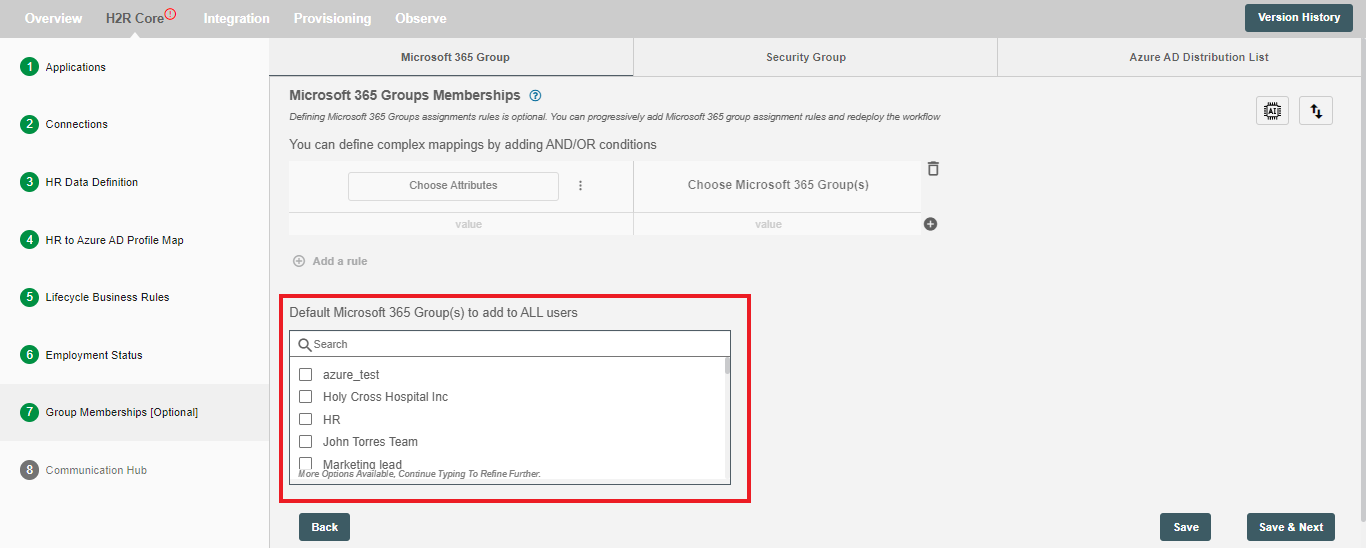
How to create a Rule for mapping the Microsoft 365 Groups?¶
Once you are on this step you will see a section under the heading Add User to Microsoft 365 Groups. This section represents a rule based on which Microsoft 365 Groups can be assigned to selected users.
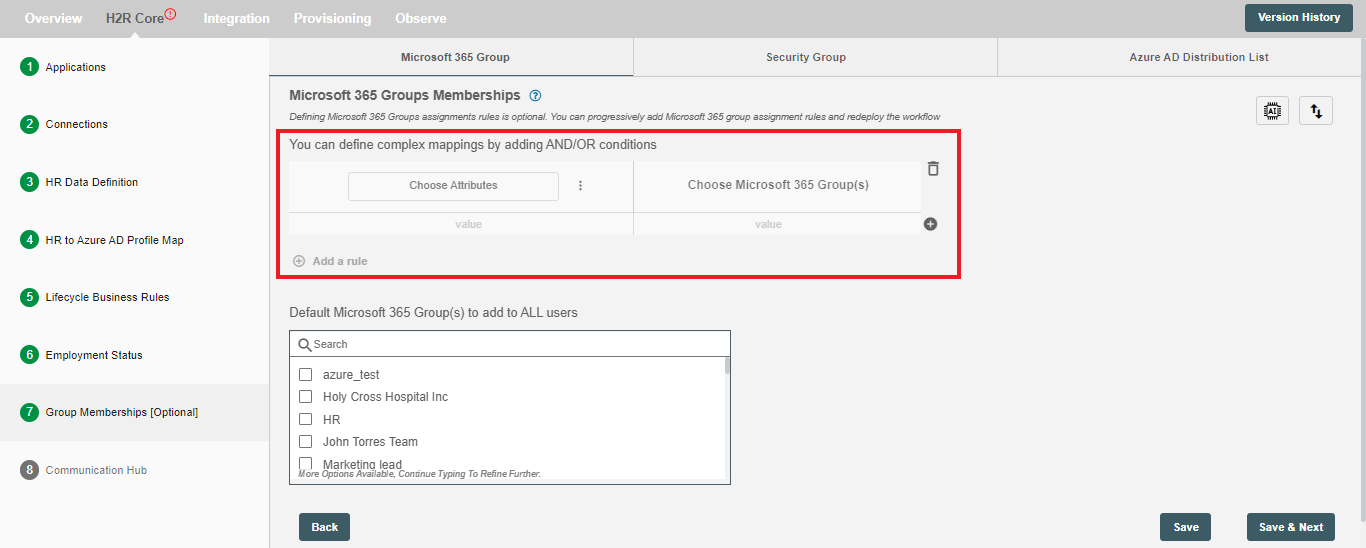
Following are the steps to create a rule:
-
You can set up the filters to select the users you want to assign Microsoft 365 Groups to. You can create a filter using the following steps -
- Click on "Choose Attribute" and select employee attribute and operation you want to apply to match that attribute.
- Next, you get a "Value" field where you type the value you want to match the attribute with and also choose the Microsoft 365 Groups you want to assign.
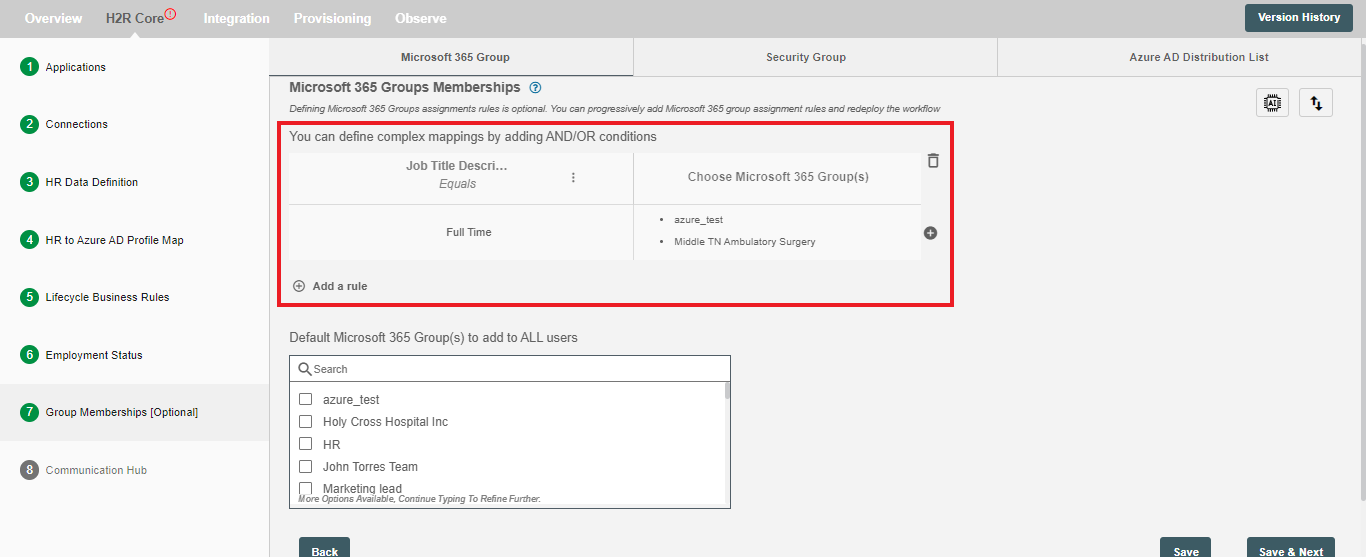 Figure 3. Example of an Microsoft 365 Groups filter
Figure 3. Example of an Microsoft 365 Groups filter -
You can add multiple filters using the "AND" and "OR" logic. These logics can be added using the
:button present on the right of the value input field. -
You can add multiple rows of the above filters using
+button inside the box.
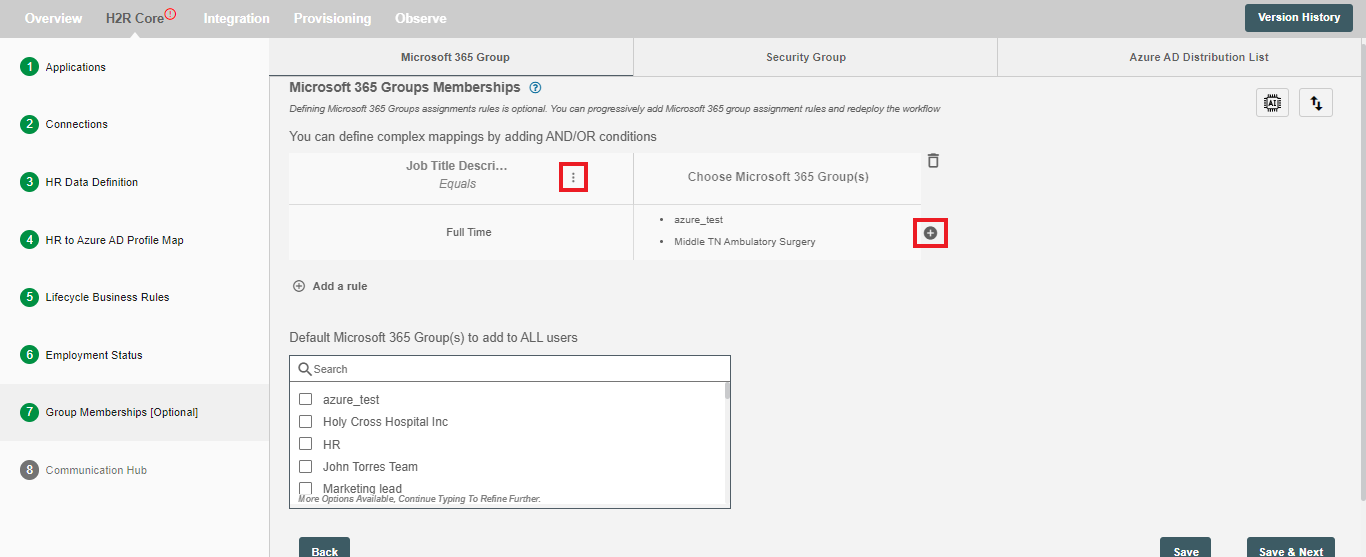
You can add or delete more rules with different priority using the Add a rule or delete button respectively.
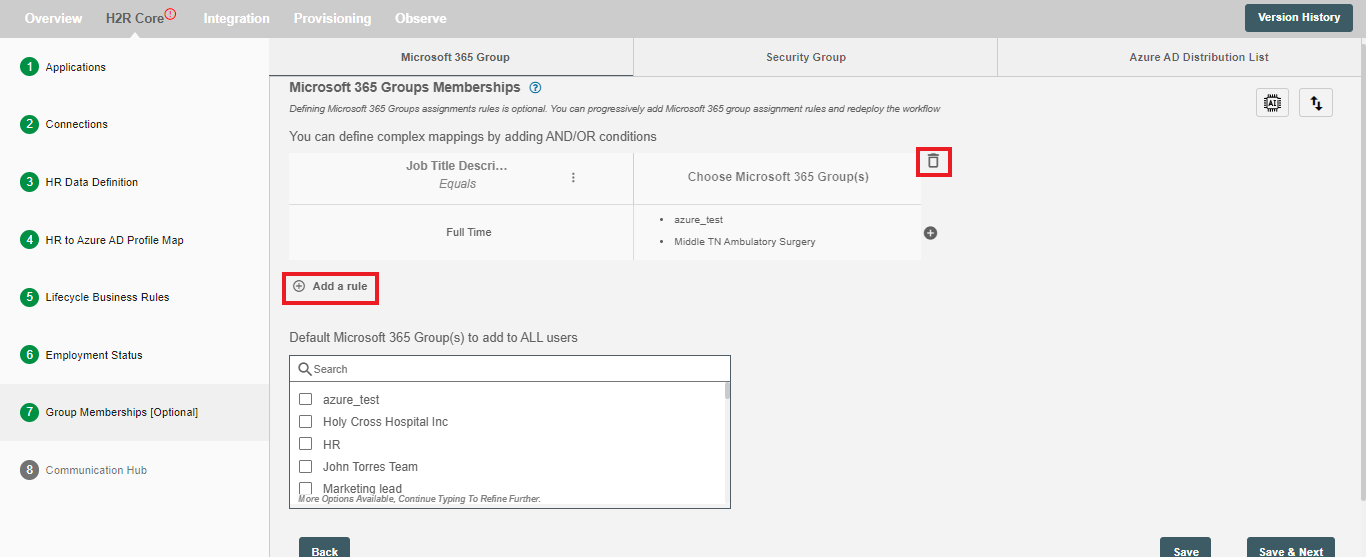
Adding the default Microsoft 365 Groups¶
This is not a mandatory field. To add default Microsoft 365 Groups, you need to select Groups from the view. All the users processed will be added to these groups.
Import And Export Mapping Rules¶
Using this feature, you will be able to import all the mapping rules by uploading a .csv or .xlsx file. Also, you can export all the mapping rules as a .csv/.xlsx file.
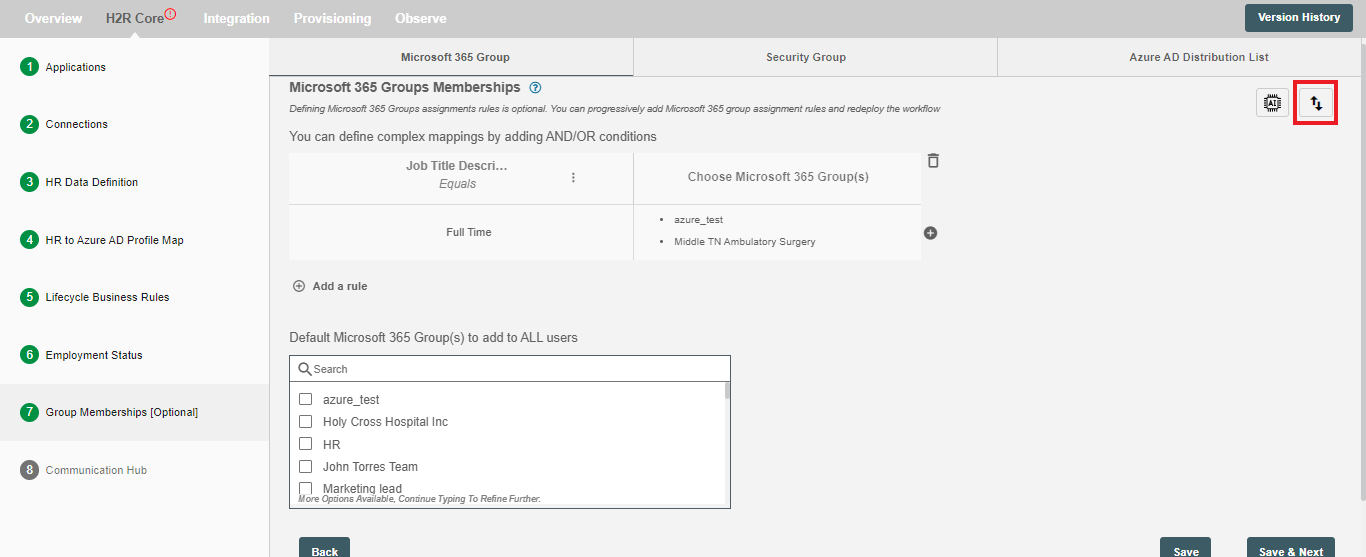
To Import or Export a file you have to first click on Import/Export Mapping Rules button. Clicking on this button will open a Dialog box containing two tabs, one is for importing and other is for exporting the mapping rules. By default if the form is valid you will be redirected to Export tab otherwise the Export tab will remain disabled and you will be redirected to the Import tab.
Importing mapping rules¶
Steps for importing file:
-
Choose Import tab from the dialog box.
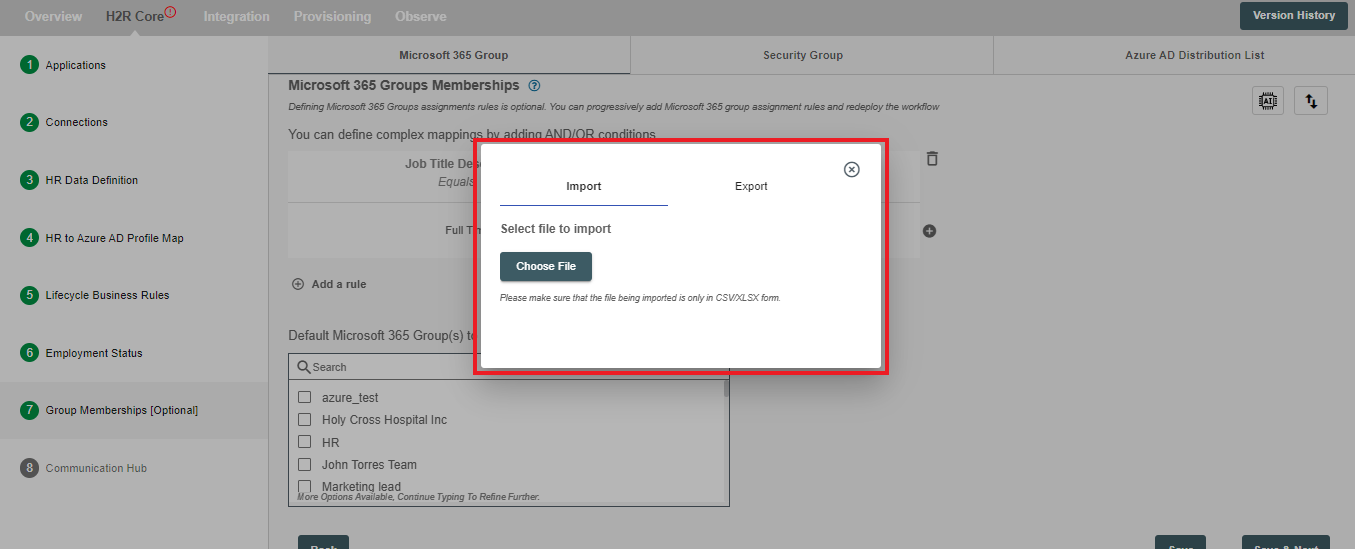 Figure 7. Dialog Box For Importing .xlsx or .csv File
Figure 7. Dialog Box For Importing .xlsx or .csv File -
Now Click on Choose File button to choose the file you want to import. Clicking on button will open file directory from which you can select .csv or .xlsx file.
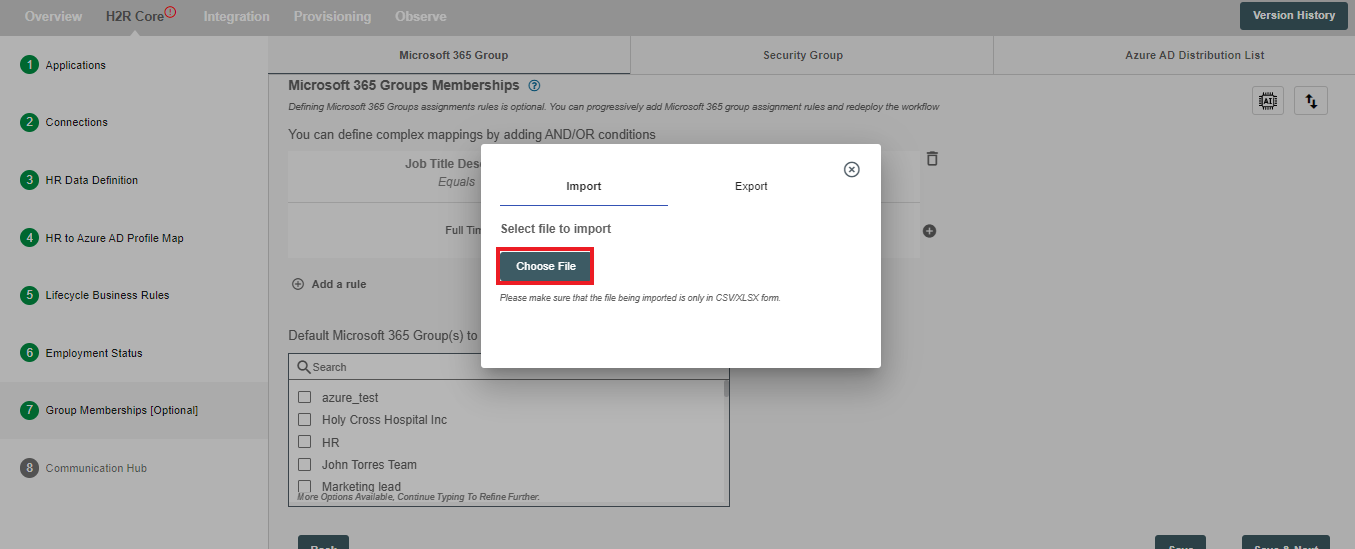 Figure 8. "Choose File" button for choosing file to be imported.
Figure 8. "Choose File" button for choosing file to be imported.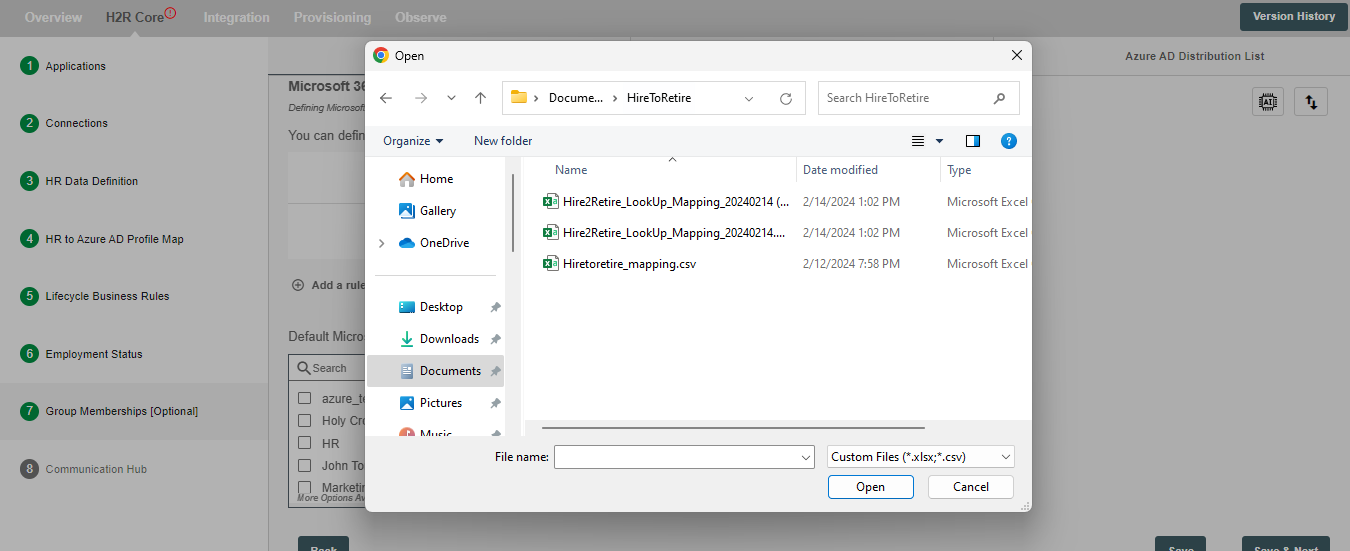 Figure 9. Windows Tab for choosing .xlsx or .csv File.
Figure 9. Windows Tab for choosing .xlsx or .csv File. -
After doing first 3 steps please wait while your file gets imported and rules get created.
Note - There is the specific format to import file. You can get the format by exporting some mapping rules.
Exporting mapping rules¶
Steps for exporting file:
-
Choose Export tab from a dialog box.
 Figure 10. Dialog Box for Exporting File.
Figure 10. Dialog Box for Exporting File.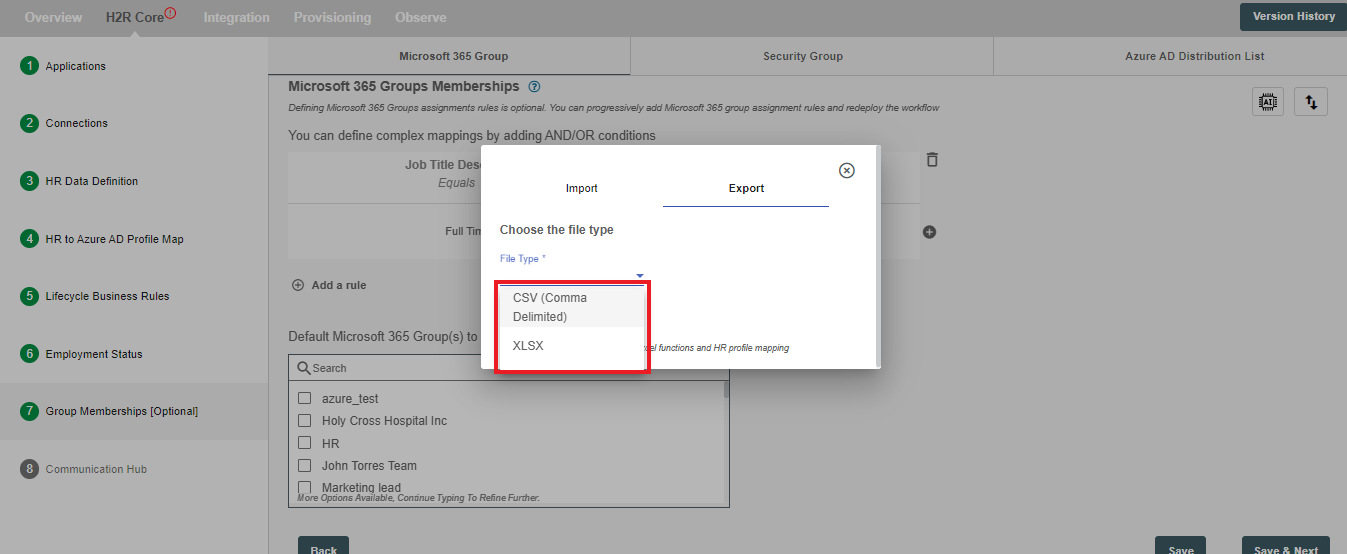 Figure 11. File Formats To Export.
Figure 11. File Formats To Export. -
Now Select the file format from the dropdown and click on Export button. Once clicked your file will get exported in the selected format and the name of the file will be Hire2Retire_MG_Mapping_(TimeStamp).
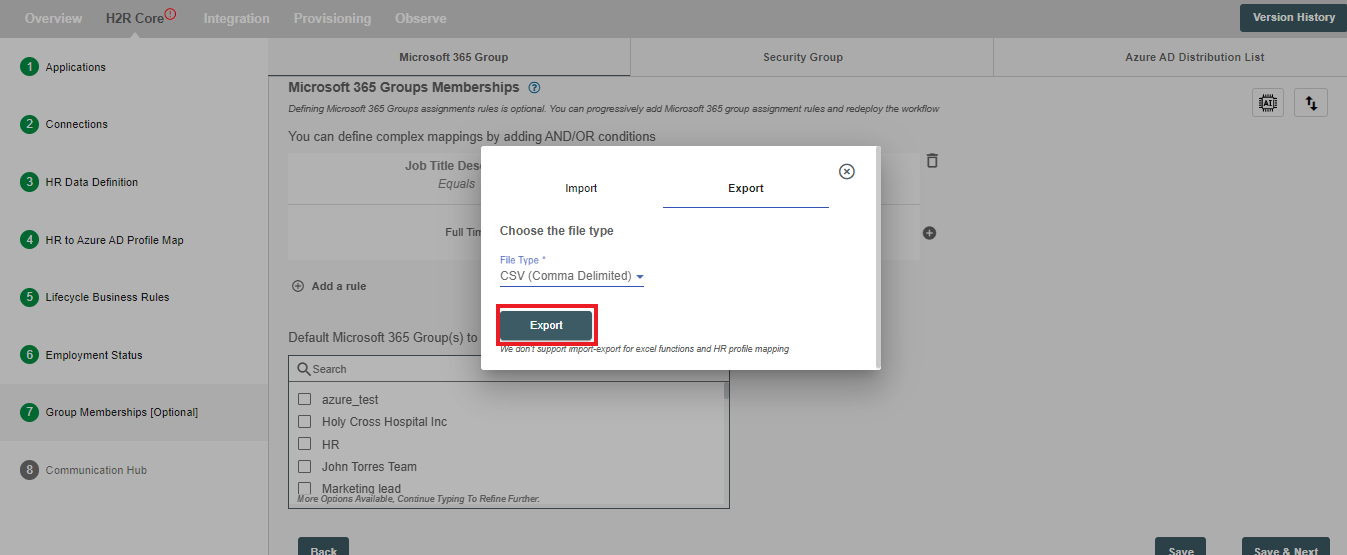 Figure 12. "Export" button.
Figure 12. "Export" button.
AI Insights for Microsoft 365 Group Memberships¶
With RoboMQ’s new AI model, rule sets for Microsoft 365 groups can be seamlessly generated. Click the icon adjacent to 'Microsoft 365 Group Memberships' in the workflow, and fill out the form for more details. Upon submission, RoboMQ’s AI team will engage with you, craft rule sets, and deliver you as a CSV file.
